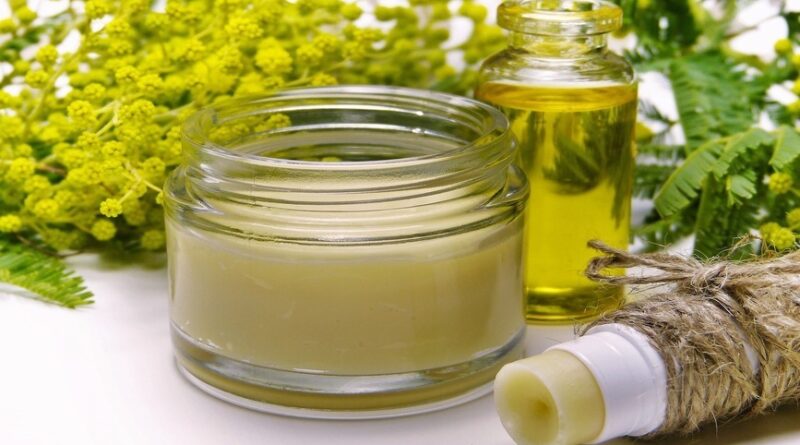The Ultimate Combination Skin Care Routine and How to Manage It
Combination skin is characterised by being both dry and oily. Although not quite the dermatological jackpot (we see you, normal skin types), your dry and oily areas of skin can coexist with the appropriate skin care routine.
Without a question, this skin type can be challenging, but here’s how to improve your skin care routine for mixture skin.
Combination skin symptoms
A combination of oily and dry skin can manifest in various ways and proportions.
There are no hard and fast rules on how it looks and feels, and it can alter according on the weather, lifestyle circumstances, and stress.
You can determine how your mixture skin looks with a little observation.
Shiny skin, larger-looking pores, and acne are all signs of oiliness.
Dryness symptoms may include:
flaking redness
Tightness or harshness of feeling
How to Spot Combination Skin
When you feel like you have two different skin types at the same time, you have a mixture of skin. With oily skin, you should expect a greasy appearance, blackheads, frequent breakouts, and enlarged pores in the T-zone. Dry skin is characterized by dry spots, tight skin, flaking, and dullness.
When you have mixed skin, your cheeks, temples, and eye area are dull and dry, however the rest of your face is oily, such as your T-zone and chin. Another sign of mixture skin is if you detect a difference in your skin with the seasons.
If not the seasons, it could be the movement of your skin throughout the day. This means starting out matte and gradually becoming oilier over the day as your natural oils shine through. Finally, if your cheeks appear dry but your forehead appears oily, you most likely have mixed skin. If you have trouble finding a foundation that doesn’t make your face look overly greasy in some areas or too dry in others, you most likely have mixed skin.
The best skin care regimen for mixed skin
When developing a skin care programmed for combination skin, think conservatively.
Choose gentle products that can moisturise dry areas without causing extra oiliness, and only apply treatments to problem areas.
Routine in the morning:
Use these products in this order to achieve more balanced skin.
Cleanser: It’s critical to clean off any nighttime buildup.
Toner: Toner eliminates any oil that your cleanser did not remove and balances the pH of your skin. Make certain you use an alcohol-free toner.
Serum: Serums both hydrate and protect the skin. It is advisable to use a serum containing hyaluronic acid.
Moisturizer: You’ll require two moisturizing creams if you’ve got combined skin. Choose a creamy composition for dry regions. Choose a lightweight, water-based solution for greasy areas.
Sunscreen: Select a lightweight sunscreen with at least SPF 30.
Makeup: Use lightweight products as desired. Oil-free foundation and concealer should be used.
Routine in the evening:
In the evening, try using the following products in the following order:
Remover of makeup: If you apply makeup, makeup remover keeps pores clear and allows your skin to breathe. Micellar water is one of the gentlest things to use for this purpose.
Cleanser: Cleanse both during the day and at night. A nightly cleanser should remove any leftover makeup as well as natural buildup.
Exfoliant: Exfoliants are useful for exfoliating dead skin cells once a week, which keeps pores fresh and helps dry skin.
Mask for the face: Try multi-masking once a week, which is when you apply multiple masks to different parts of your face.
Serum, therapy, or moisturizer: Evenings are excellent for stronger products, so for dry regions, consider an emollient-rich moisturizer.
What if I’m prone to acne?
“Exfoliate on a regular basis, use a gentle toner, and always wear sunscreen with an SPF of at least 30,” dermatologist Dr. Elizabeth Mullans of Uptown Dermatology in Houston says.
Salicylic acid is a beta-hydroxy acid (BHA) that can help with oil production and unclog pores, hence preventing breakouts. To cure oily spots, look for it in topical spot treatments, serums, and gels.
Best ingredients for combined skin care
When selecting skin care for your morning and evening regimens, check for the following elements to aid your oily and dry skin:
Hyaluronic acid helps moisturize the skin without leaving greasy behind. This can be found in serums, moisturizers, and cleansers that can be used on your entire face.
Lactic acid is an alpha hydroxy acid (AHA) which may exfoliating skin that is dry and gently open pore in oily areas. It may be present in serums, toners, and other treatments.
Salicylic acid may assist to regulate oil production and keep pores clear.
Retinol is a type of retinoid derived from Vitamin A that promotes skin cell turnover for a more even skin tone. It’s a go-to treatment for fine lines and hyperpigmentation, and it can also help reduce oil. Please keep in mind that it can be drying.
Vitamin E can help to cleanse pores, balance out skin tone, and minimize fine wrinkles, redness, and irritation. It’s found in acne scar treatments and antioxidant serums.
Vitamin C helps to minimize hyperpigmentation, balance out skin tone, and minimize the appearance of fine wrinkles. If you need a pick-me-up in the morning, try a vitamin C serum between toning and moisturizing. It can make you photosensitive, so always use sunscreen!
How to Look After Combination Skin
Check out these helpful skin care suggestions to help you establish a skin care programme tailored to the demands of your combination skin.
1. Use a Gentle Facial Cleanser
Many people with oily skin believe that using a harsh cleanser will dry out their skin’s natural oils, but the American Academy of Dermatology (AAD) says the opposite is true. A harsh cleanser can irritate your skin, causing an increase in oil production – exactly what you want to avoid. Instead, choose a gentle facial cleanser that will not strip your skin.
2. Include Exfoliation in Your Routine
Exfoliating dead skin cells is essential for keeping your complexion smooth and glowing if you have mixed skin. Exfoliation, whether with a serum, a toner, or a face scrub, can assist to buff off the outermost layer of dead skin cells, revealing a velvety and glowing complexion.
3. Never Forget to Use Moisturizer
Moisturizer is a must-have for all skin types if you want your complexion to look and feel its best. Choose a non-comedogenic moisturizer that is nourishing without being sticky or greasy for combination skin, such as a water cream. As a result, it will not feel heavy on the skin, but the formula will enable you to address both the dry and oily areas of your face.
4. Avoid Touching Your Face
This is easier said than done because many of us don’t even realise we’re doing it most of the time. You don’t want to transfer bacteria and dirt from your hands to your face because it could block your pores. So, as much as possible, avoid becoming too handsy with your face – whether you have combination skin or not.
5. Blot Oil
If you’re having trouble getting rid of greasiness in your T-Zone, reach for blotting papers. These papers are small enough to put in your bag and provide a quick, effective approach to get rid of an oily face without destroying your makeup.
If blotting papers aren’t cutting it, consider a mattifying primer, such as the L’Oréal Paris Prime Lab Up to 24H Matte Setter. This makeup primer is best suited for oily and combination skin and has a lightweight, non-comedogenic composition that effortlessly eliminates shine and increases your makeup wear time for up to 24 hours.
6. Construct a Broad-Spectrum Sunscreen Your best friend
SPF is essential for all skin types, just as moisturizer is. While omitting SPF on occasion may not appear to be a huge deal, it is. This can hasten obvious symptoms of aging, such as fine lines, wrinkles, and dark spots, as well as increase dryness and make your face appear dull.
7. Use a Face Mask on Your Complexion
Multi-masking is an excellent skin care technique for combination skin. It’s all about applying multiple face masks to different areas of your face at the same time, depending on what each area requires. To regulate oils and draw out impurities, apply a purifying clay mask to your T-zone and oily areas. Choose a moisturizing face mask to plump and brighten your skin in dry areas.
8. Take care of your dry under-eyes
Not only is the under-eye area one of the first to show symptoms of aging, but it can also be prone to dryness, especially if you have dry or mixed skin. Add eye cream or eye serum to your morning and evening skin care routines to address skin concerns such as fine lines and wrinkles, as well as dark circles and dehydration.




